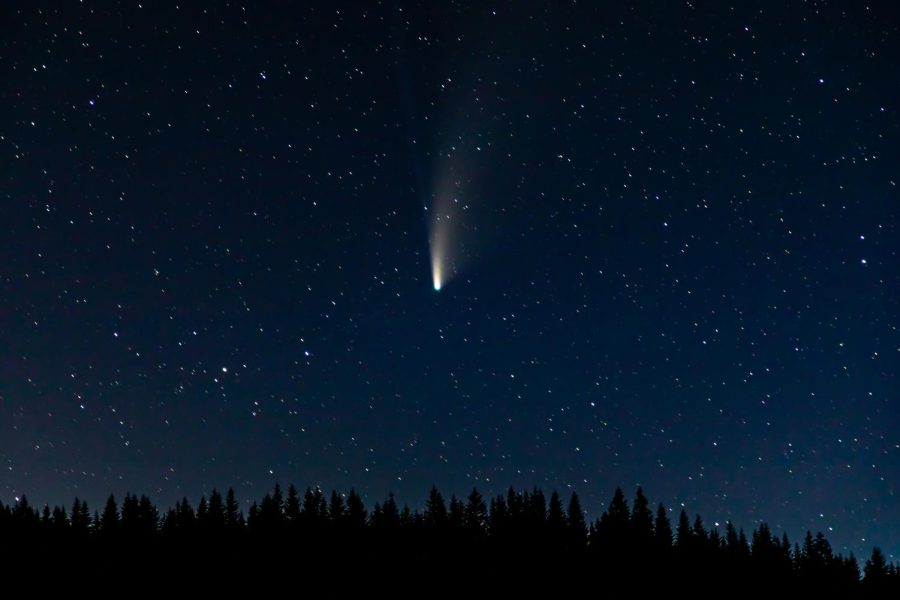NASA’s NEOWISE telescope captures 12-year timelapse of the sky
NASA’s NEOWISE telescope is used to hunt for asteroids and comets that could be a potential threat to Earth.
November 7, 2022
On Oct. 18, NASA released on its website that NEOWISE has captured 18 photos since being repurposed, creating a time-lapse movie of the sky. When the telescope’s images are stitched together, scientists can see a decade’s worth of change in the cosmos, which is incredibly important.
In December of 2009, NASA launched its Wide-Field Infrared Survey Explorer space telescope into space. WISE’s mission was to hunt the sky for asteroids, galaxies and comets using infrared wavelengths.
Infrared light is emitted by several cosmic objects such as stars and faint galaxies, which is what the spacecraft measures.
According to Space.com, WISE was special because it took images of the entire sky, offering a broader look at the cosmos. While exploring the inner solar system, WISE took two full sky pictures before it was brought back down to earth in 2011.
NASA scientists took the telescope out of its hibernation in 2013 and repurposed it to study near-earth objects, NEOs, which gave it its new name NEOWISE. The telescope has been hunting for asteroids and comets that could pose a threat to earth, rendering its mission a planetary defense.
Because humans do not want another asteroid to wipe out life on planet earth, NEOWISE and other planetary defense spacecrafts detect and observe asteroids in or near earth’s orbit. Scientists assess these near-earth objects for collision risks in order to prepare for an impact, according to Jet Propulsion Laboratory.
Since 2013, NEOWISE has discovered thousands of asteroids and more than 158,000 planets, most of which have never been detected before.
While traveling the sky, NEOWISE takes a half trip around the sun every six months and captures pictures of the sky in all directions.
“Having time-lapse images is an important tool in studying faint objects that can be detected only through their movements, such as asteroids and brown-dwarf stars. The video (posted by NASA) highlights these as well as fascinating images of black holes, pulsating and variable stars, and star formation over time,” said geology professor Philip Carpenter.
NEOWISE’s “sky map” provides a better understanding of our universe.
“It’s quite an amazing mission given that the infrared telescope is only 16-inches in diameter and has been re-purposed several times over its history since 2009. NASA/JPL has also made the data and images freely available to anyone on the Internet,” Carpenter said.
The spacecraft has identified thousands of solar system objects and has made approximately 1.3 million infrared measurements. NEOWISE is significant in the exploration of space because it’s discovering objects that have never been seen before. Currently, NEOWISE’s mission is still ongoing.



